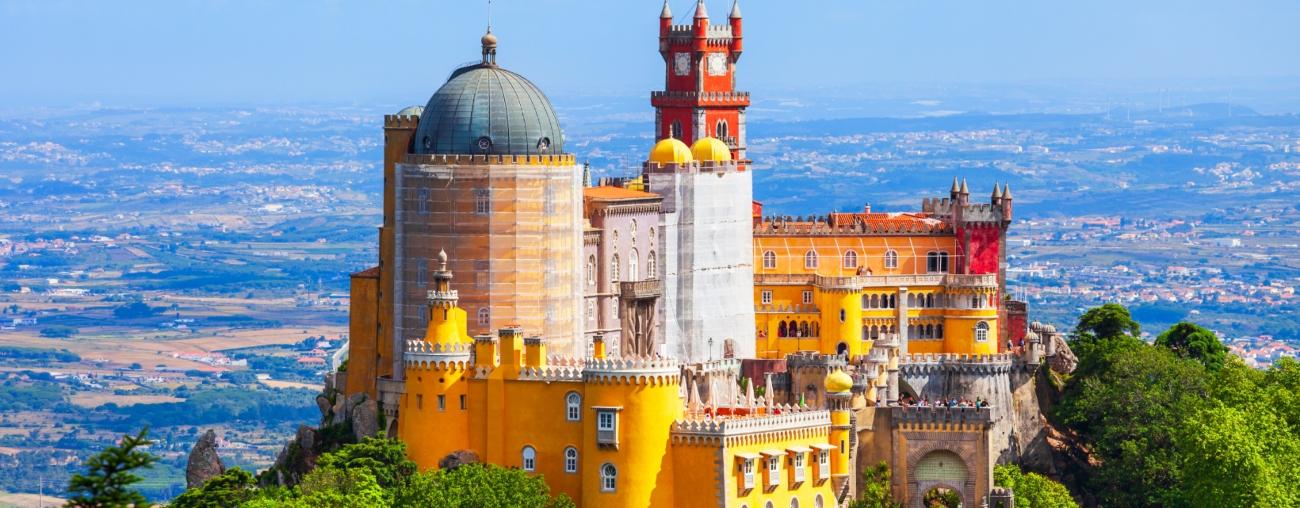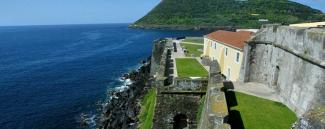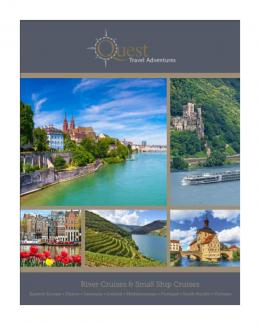UNESCO Sites in Portugal

Portugal is a small European country located on the western coast of the Iberian Peninsula. Despite its size, Portugal is rich in culture, history, and natural beauty and is home to a remarkable number of UNESCO World Heritage Sites. These sites reflect the country's diverse and unique heritage, ranging from ancient rock art to medieval castles, historic cities, and cultural landscapes. Here are some of the most notable UNESCO World Heritage Sites in Portugal:
Tower of Belém: The Tower of Belém is located in the capital city of Lisbon and is part of the larger Belém Cultural Landscape, which also includes the nearby Jerónimos Monastery and the Belém Palace. The Tower of Belém was built in the early 16th century as a fortress to protect the entrance to the port of Lisbon. The tower features ornate stonework and sculptural elements, including carvings of ropes, anchors, and sea monsters. The tower played an important role in Portugal's maritime history, serving as a starting point for many voyages of exploration that led to the discovery of new lands and the establishment of Portugal's overseas empire. It was also used as a customs house, a lighthouse, and a prison at various times throughout its history. The Tower of Belém was inscribed on the UNESCO World Heritage List in 1983 as part of the "Monastery of the Hieronymites and Tower of Belém in Lisbon" property. It is an outstanding example of a fortified tower from the Age of Discovery and a symbol of Portugal's role as a great seafaring nation.
Historic Centre of Évora: The city of Évora is an open-air museum showcasing Portugal's rich history and architectural heritage. Located in the Alentejo region of Portugal, the walled town center is a maze of narrow streets and alleys that lead to beautiful churches, palaces, museums, and numerous monuments. The most impressive site is the Temple of Diana, a work of Roman architecture that dates back to the 1st century AD. Another notable building is the 16th-century Chapel of Bones, decorated with the bones and skulls of over 5,000 people. Franciscan monks built the chapel as a reminder of the transience of life and the inevitability of death. The historic center of Évora was inscribed on the UNESCO World Heritage List in 1986 in recognition of its outstanding cultural value. It is considered an exceptional example of a well-preserved medieval and Renaissance city and a testament to Portugal's rich history and cultural heritage.
Cultural Landscape of Sintra: Famous for its many palaces, gardens, and natural beauty, the cultural landscape of Sintra includes both historical monuments and natural features. One of the most important landmarks in Sintra is the Palácio Nacional de Sintra, a royal palace that dates back to the 14th century. The palace has a distinctive architectural style that combines Gothic, Manueline, and Moorish influences and is home to many significant works of art. Another notable landmark in Sintra is the Castle of the Moors, a medieval fortress that dates back to the 8th century. The castle is perched on a hilltop overlooking the town and features impressive ramparts and battlements. The most popular place to visit is the 18th-century Palácio Nacional da Pena, a colorful and romantic palace that blends Gothic, Manueline, and Renaissance styles. The town also features parks and gardens, including the Parque Natural de Sintra-Cascais, a protected natural park home to various flora and fauna. Sintra was inscribed on the UNESCO World Heritage List in 1995 to recognize its outstanding cultural and natural value. It is considered to be an exceptional example of a well-preserved medieval town.
The Historic Center of Porto: Porto is the second-largest city in Portugal and is located on the banks of the Douro River in the north. The city is known for its cultural and historical significance, as well as its production of port wine. The city features many notable landmarks, including the Torre dos Clérigos, a baroque bell tower that offers stunning views over the city. The historic center is also home to the Ribeira district, a picturesque area of narrow streets and colorful buildings along the riverfront. In most photographs of the city you’ll find the striking Dom Luís I Bridge, a double-decker metal bridge that spans the Douro River. The historic center of Porto was inscribed on the UNESCO World Heritage List in 1996 in recognition of its outstanding cultural value. The city is considered an exceptional example of a European city that has preserved its historical and cultural heritage while evolving and adapting to modern life. It is also recognized for its essential role in producing port wine, a significant regional cultural and economic activity.
Alto Douro Wine Region: Also located in the north of Portugal, the Douro Wine Region is the oldest demarcated wine region in the world and has been producing wine for over 2,000 years. The steep slopes and terraced vineyards along the Douro River make for a stunning landscape, and the wine produced here is renowned for its quality. Visitors can leisurely cruise on the Douro River or explore the region's historic towns and villages. The Alto Douro Wine Region was inscribed on the UNESCO World Heritage List in 2001 to recognize its outstanding cultural and natural value. It is considered an exceptional example of a traditional European wine-producing region and a testament to the skill and dedication of the winegrowers who have shaped the landscape over the centuries.
Prehistoric Rock Art Sites in the Côa Valley and Siega Verde: These two sites are located on the border between Portugal and Spain and contain some of Europe's most important examples of prehistoric rock art. These sites feature art from early human societies between 22,000 and 10,000 years ago. The rock art includes depictions of animals, humans, and abstract symbols that date back to the Paleolithic period. The art provides valuable insights into the lives and beliefs of early human societies and the evolution of art and culture over thousands of years. The sites were inscribed on the UNESCO World Heritage List in 1998 to recognize their outstanding cultural value and importance in advancing our understanding of prehistoric societies and the evolution of human culture.
The Landscape of Pico Island in the Azores and the Vineyard Culture: This cultural landscape includes the unique method of volcanic rock vineyard cultivation developed on the island over the past few centuries. The vineyards are planted in small, rectangular plots called currais, surrounded by low, black lava stone walls to protect the vines from the wind and salt spray. The rich volcanic soil and the Atlantic climate create ideal conditions for producing Verdelho wine, which has been produced on Pico for over 500 years. The Landscape of the Pico Island Vineyard Culture was inscribed on the UNESCO World Heritage List in 2004 to recognize its unique cultural and agricultural heritage. It is considered an outstanding example of a sustainable and productive cultural landscape and is an important symbol of the history and identity of the Azores region.
These are just a few of Portugal's UNESCO World Heritage sites that are well worth a visit. Portugal's rich history and cultural heritage make it an incredible destination for travelers interested in exploring the past and experiencing the present. Let us create a customized itinerary for your next adventure. Some of our most popular Portugal itineraries include Delightful Douro, Lisbon & Porto Combo,Three Island Azores Tour, Alentejo and Algarve Self-Drive Exploration & Lisbon and Alentejo Luxury Getaway.











